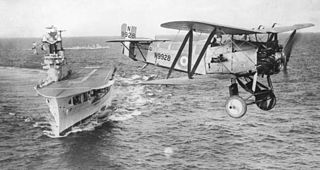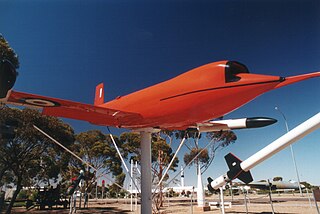
The Airspeed AS.10 Oxford is a twin-engine monoplane aircraft developed and manufactured by Airspeed. It saw widespread use for training British Commonwealth aircrews in navigation, radio-operating, bombing and gunnery roles throughout the Second World War.

The Blackburn Shark was a carrier-borne torpedo bomber designed and built by the British aviation manufacturer Blackburn Aircraft. It was originally known as the Blackburn T.S.R., standing for "torpedo-spotter-reconnaissance", in reference to its intended roles. The Shark was the last of Blackburn's biplane torpedo bombers.

The Fairey Flycatcher was a British single-seat biplane carrier-borne fighter aircraft made by Fairey Aviation Company which served from 1923 to 1934. It was produced with a conventional undercarriage for carrier use, although this could be exchanged for floats for catapult use aboard capital ships.

The Junkers A50 Junior is a German sports plane originally built during the 1930s.

The Armstrong Siddeley Cheetah is a seven-cylinder British air-cooled aircraft radial engine of 834 cu in capacity introduced in 1935 and produced until 1948. Early variants of the Cheetah were initially known as the Lynx Major.

The Boulton Paul Balliol and Sea Balliol are monoplane advanced trainer aircraft designed and produced by the British aircraft manufacturer Boulton Paul Aircraft. On 17 May 1948, it became the world's first single-engined turboprop aircraft to fly. The Balliol was operated primarily by both the Royal Air Force (RAF) and the Royal Navy Fleet Air Arm (FAA).

The Airspeed AS.6 Envoy was a twin-engined light transport aircraft designed and produced by the British aircraft manufacturer Airspeed Ltd.

The Airspeed AS.39 Fleet Shadower was a British long-range patrol aircraft design that did not go beyond the prototype stage. A similar aircraft, the General Aircraft Fleet Shadower, was also built to the extent of prototypes. While the concept of a fleet shadower had some promise, the resulting designs were soon overtaken by wartime developments in airborne radar.

The Airspeed AS.5 Courier was a British six-seat single-engined light aircraft that was designed and produced by the British aircraft manufacturer Airspeed Limited at Portsmouth. It has the distinction of being the first British aircraft fitted with a retractable undercarriage to go into quantity production.

The de Havilland DH.50 was a 1920s British large single-engined biplane transport built by de Havilland at Stag Lane Aerodrome, Edgware, and licence-built in Australia, Belgium, and Czechoslovakia.

The Airspeed AS.8 Viceroy was a British racing version of the Airspeed AS.6 Envoy built by Airspeed (1934) Limited at Portsmouth. The Viceroy was built to order for Captain T. Neville Stack and Sydney Lewis Turner, to compete in the England-Australia MacRobertson Air Race. Only one aircraft, registered G-ACMU, was built.

The Percival Q.6 was a 1930s British communications aircraft built by Percival Aircraft Limited at Luton. Originally, the Percival Q.6 was a civil transport but It was used during the Second World War by the Royal Air Force and Royal Navy as a communications and liaison aircraft. It was a twin-engine, low-wing monoplane with a tailwheel undercarriage.

The Avro 652 was a 1930s British light airliner, built by A.V. Roe and Company. It was a twin-engine, low-wing monoplane with a retractable undercarriage, and a tailwheel. Although only two were produced, it formed the basis for the successful Avro Anson.

The GAF Jindivik is a radio-controlled target drone produced by the Australian Government Aircraft Factories (GAF). The name is from an Aboriginal Australian word meaning "the hunted one". Two manually-controlled prototypes, were built as the GAF Pika as a proof of concept to test the aerodynamics, engine and radio control systems, serialled A92-1/2, 'B-1/2'. The radio-controlled Jindivik was initially designated the Project B and received serials in the A93 series. Pika is an Aboriginal Australian word meaning flier.

The de Havilland DH.75 Hawk Moth was a 1920s British four-seat cabin monoplane built by de Havilland at Stag Lane Aerodrome, Edgware.

The Koolhoven F.K.51 was a 1930s Dutch two-seat basic training biplane built by the Koolhoven Company.

The SET 7 was a military trainer and reconnaissance aircraft that was produced in Romania in the mid-1930s. It was originally designed as a conventional single-bay biplane, with slightly staggered wings, a standard undercarriage with fixed tailskid, and a tandem open-cockpit arrangement for the pilot and instructor or observer. Power was supplied by an Armstrong Siddeley Jaguar radial engine, and from the outset the aircraft was equipped for wireless and photographic reconnaissance duties.

The Fairchild FC-1 and its derivatives were a family of light, single-engine, high-wing utility monoplanes produced in the United States in the 1920s and 1930s. The aircraft was originally designed to provide a camera platform for Sherman Fairchild's aerial photography and survey business, Fairchild Aerial Surveys.

The Gloster A.S.31 Survey was a 1920s British photo-survey biplane developed by the Gloster Aircraft Company from the de Havilland DH.67 design project.
The Boulton Paul P.115 and Boulton Paul P.116 were basic trainers designed by Boulton Paul Aircraft to meet Air Ministry Specification T.16/48.



















